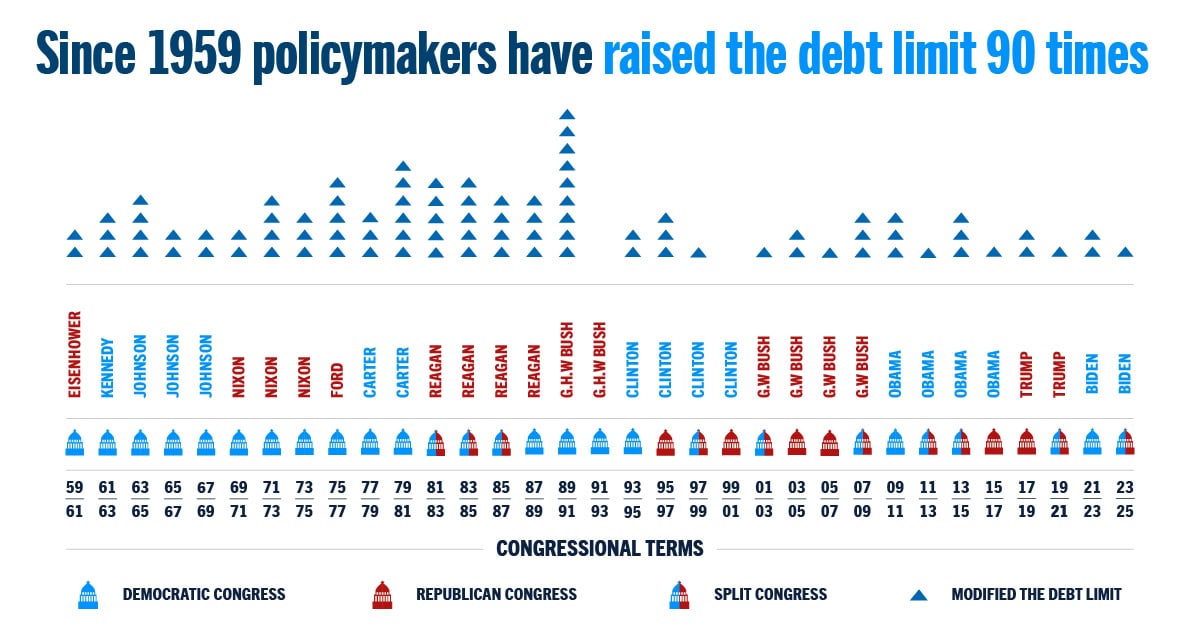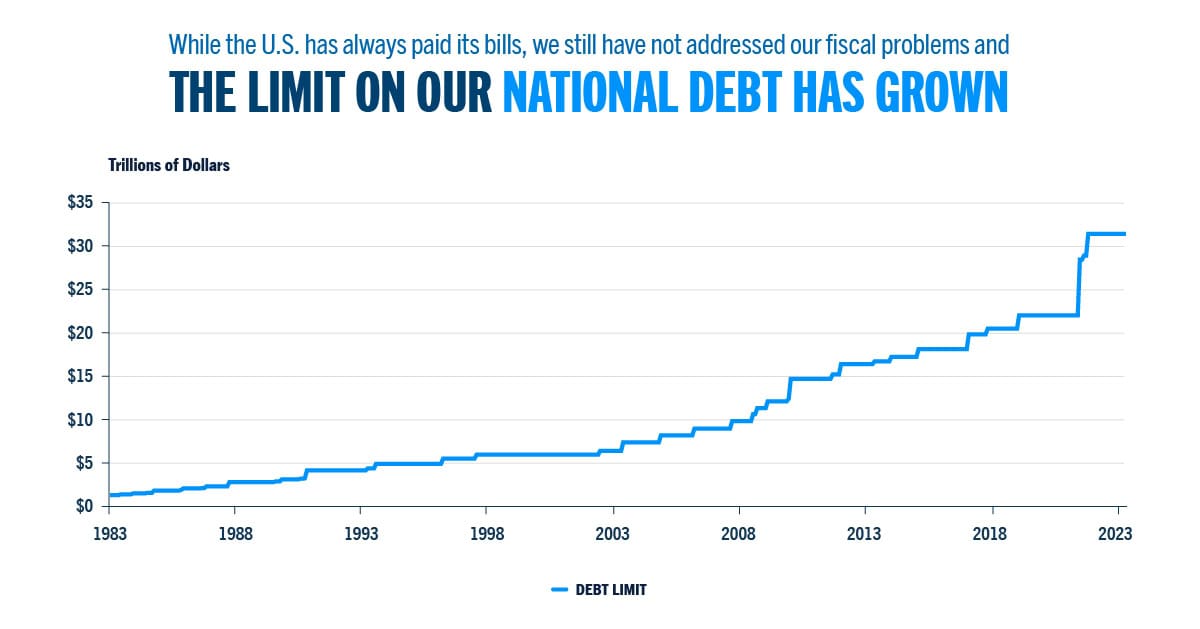The debt ceiling, also known as the debt limit, is the maximum amount of money that the U.S. Treasury can borrow. Increasing the debt ceiling allows the Treasury to borrow funds to pay for government obligations that have already been incurred as the result of laws and budgets approved by the President and the Congress.
Legislation enacted in June 2023 suspends the debt limit through January 1, 2025, allowing the government to continue spending on federal programs.
Why is understanding the debt ceiling important and what are the implications for our economy and our fiscal condition? The infographic below explains. For more details, see our analysis on the debt ceiling.

Feel free to share this infographic on Twitter.
Further Reading
How Much Do We Spend on the Federal Workforce?
Here, we examine the federal government’s expenditure on its workforce, the evolution of its size over time, and the opportunities for budget savings.
What Are Earmarks and What Purpose Do They Serve?
Earmarks have been controversial, but nevertheless were reinstated by Congress in 2021 after a 10-year moratorium.
589 Ways to Improve Government Efficiency and Reduce Deficits
A new report outlines ways to find cost savings by reducing overlap, duplication, and fragmentation across the federal government.




